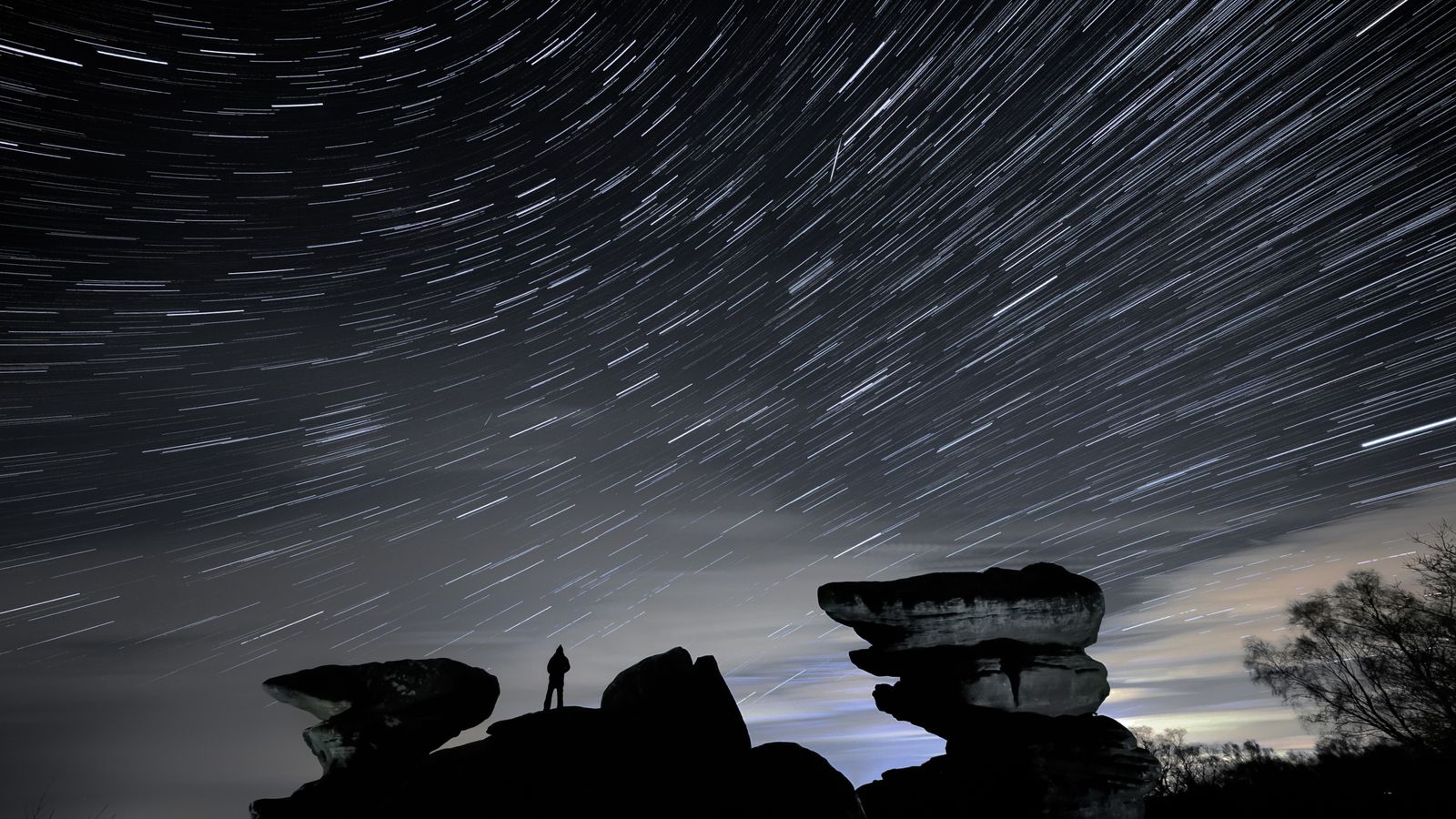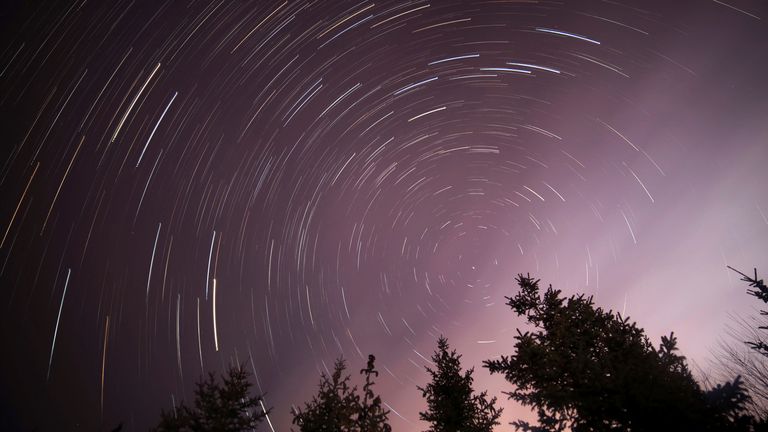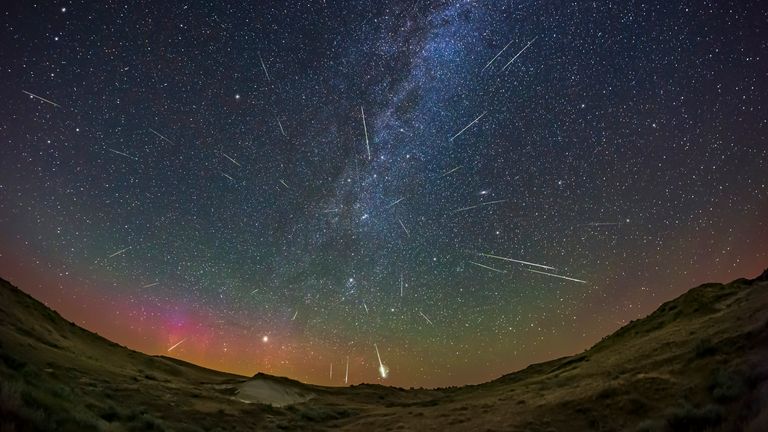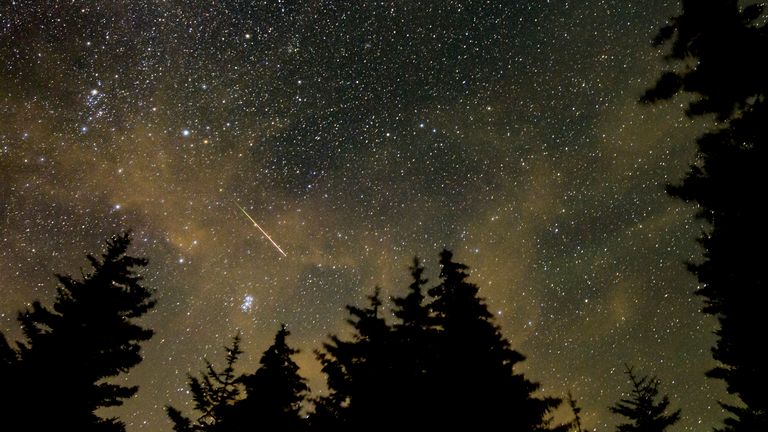The Eta Aquariid meteor shower is expected to peak in the early hours of Saturday 6 May.
It’s time to camp out, gather your sleeping bags and prepare for a night of stargazing, as you might be able to see a spectacular display of 120-160 shooting stars per hour.
The Eta Aquariids occur when the Earth passes through the debris trail of Comet Halley.
Here’s everything you need to know.
When is the Eta Aquariids meteor shower this year?
According to Royal Museums Greenwich, the meteor shower is active between 19 April and 28 May but will peak between midnight and dawn on 6 May this year.
Bill Cooke, lead of NASA’s Meteoroid Environments Office at the agency’s Marshall Space Flight Center in Huntsville, Alabama, said: “A meteor shower is like a normal rain shower, with 50-60 meteors per hour.
“An outburst is like a thunderstorm, with greater than normal meteor activity expected. A meteor storm is like a tornado, where meteor rates are over one thousand per hour.”
Where does Eta Aquariids get its name from?
The Eta Aquariids usually peak during early May each year and are known for their speed.
Eta Aquariid gets its name from the constellation in the night sky that it appears to radiate from – the Aquarius constellation.
But instead of being called the Aquarid meteor shower, the name comes from one of the stars from this constellation, Eta Aquarii.
The Eta Aquariid is one of two meteor showers created by debris from Comet Halley.
Halley’s Comet is visible from Earth once every 76 years or so.
“The pieces of space debris that interact with our atmosphere to create the Eta Aquarids originate from comet 1P/Halley,” the NASA website has said.
Comet Halley was first discovered by English Astronomer Edmund Halley in 1705.
He predicted the orbit of the comet through past observations of comets, suggesting that these sightings were, in fact, all the same comet.
Halley is known to be the most famous comet and was last seen in 1986.
Nasa said it will return in 2061 on its regular 76-year journey around the Sun.
How can I see it in the UK?
The Eta Aquariid meteor shower can be viewed in the Northern and Southern Hemispheres, but NASA has said that the highest visibility will be in the Southern Hemisphere.
“This is due to the radiant’s location in the constellation of Aquarius. Meteors will be observable after midnight, but the peak times are 3-4 am until dawn,” NASA said.
The Royal Museums Greenwich website says: “This shower favours the Southern Hemisphere and will appear low in the sky for northerly latitudes (such as the UK) in the early predawn hours.”
In order to get the best view, here’s what you can do:
• Be sure to check the weather forecast! If it is cloudy, try a day before or after the peak viewing period.
The Met Office has said Friday will be a day of sunshine and showers.
Saturday will be another cloudy and wet day for many across the UK.
So be sure to prepare in advance if you want to catch the Eta Aquariid meteor shower.
NASA has also advised people to:
• Get as far away from city lights as possible to get the best view of the meteor shower.
• Give yourself 30 minutes in the dark for your eyes to adapt.
• Do not look at your phone – again, stay away from the light.
• Try not to look at the moon.
And last but not least, get comfy! For the best stargazing method, lie down and watch the night sky.
Read more from Sky News:
World’s first artificial shooting star display
Elon Musk ‘wrong’ to call for pause in development of AI
What is a meteor shower?
Simply put, a meteor shower is a space rock or meteoroid entering Earth’s atmosphere.
“As the space rock falls toward Earth, the resistance-or drag-of the air on the rock makes it extremely hot. What we see is a ‘shooting star.’
“That bright streak is not actually the rock, but rather the glowing hot air as the hot rock zips through the atmosphere,” NASA has said.
“When Earth encounters many meteoroids at once, we call it a meteor shower,” it adds.
Here are some meteor showers over the years




